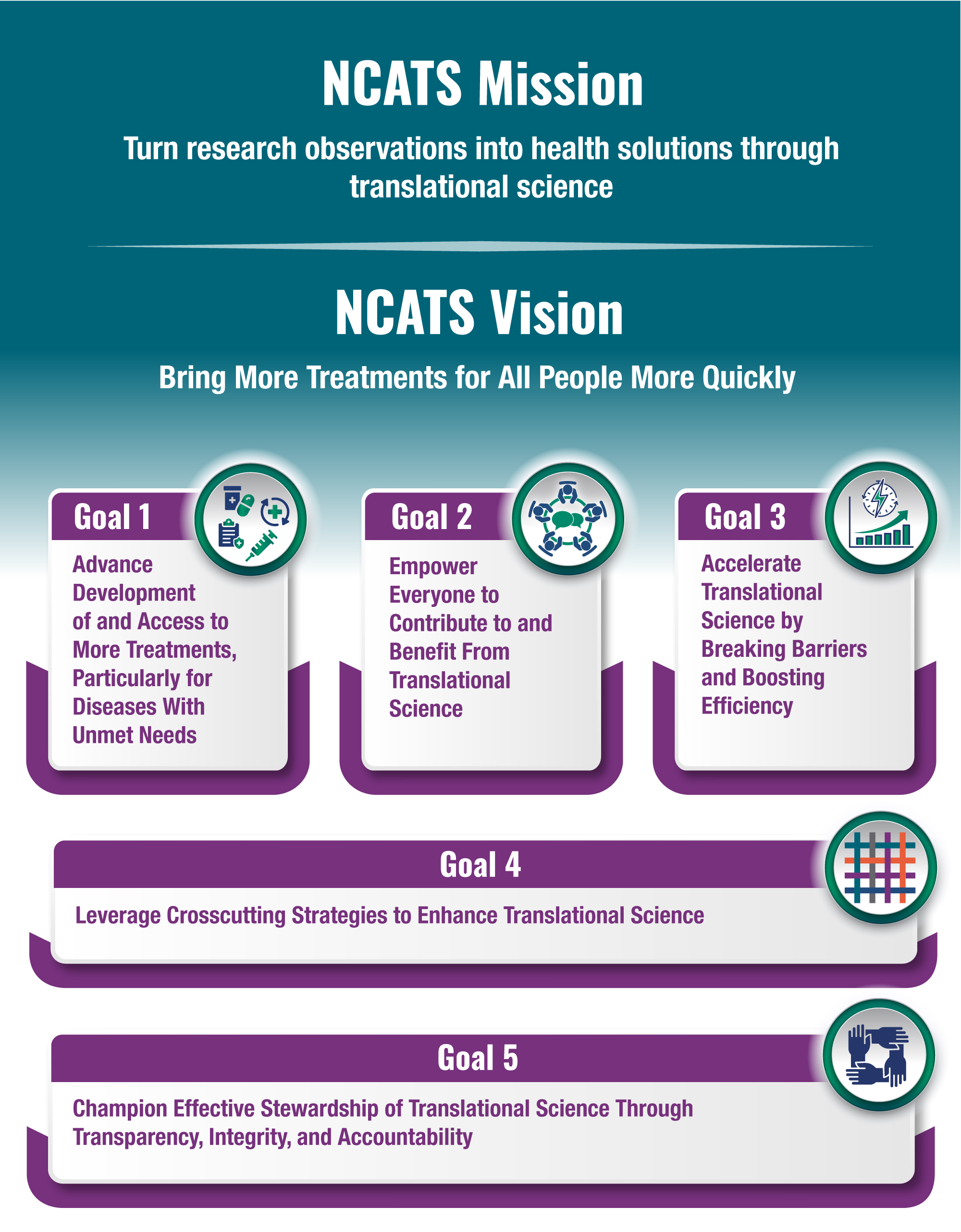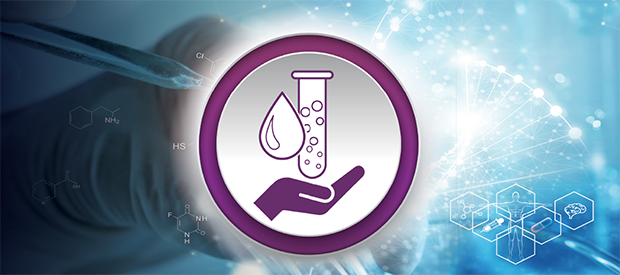Strategic Plan 2025–2030
Our strategic plan will help us advance our vision and mission for the next several years.
Director's Message
At NCATS’ 10-year anniversary event in 2021, I presented a vision for the center: a future with more treatments for all people more quickly. That transformative vision included a set of audacious goals outlining what NCATS, along with the broader translational science community, should be striving to achieve during the next decade.
Bold ideas, impactful programs, and new partnerships, steeped in the successes of the past decade, are vital to achieving this vision. The NCATS Strategic Plan for 2025–2030 is a tool to guide us.
This strategic plan represents a thorough, dynamic approach to advancing our mission of turning research observations into health solutions through translational science. The plan’s goals and objectives were shaped by input from staff and external partners, including patient and community voices. Their input came during more than 40 roundtable discussions and through a public request for information.
To translate science into practice more effectively, we must address these key needs:
- To increase the pace of development and availability of treatments
- To enable more individuals and communities to contribute to and benefit from translational science
- To identify and address inefficiencies in translation that slow and even stop research efforts
To overcome these challenges, we have established five strategic goals. These goals build on core values that emphasize working in a highly collaborative team-science culture, learning and practicing translational science, making data available, and developing an effective and accountable workforce.
As with the previous strategic plan, patients and communities are at the center of our mission and our work. Over the last 10 years, our Clinical and Translational Science Awards (CTSA) Program and Rare Diseases Clinical Research Network (RDCRN) have shown the power of engaging patients and communities throughout the entire research process. This approach led to innovations and interventions that are now saving lives and improving health. These initiatives — and many others — will play a big role under our new strategic directions.
Our strategic plan is a living document. As we implement the plan, we will continuously assess and adapt our strategies, checking in with ourselves and our communities. We have built the plan to be flexible in order to handle new challenges, opportunities, and innovations as they emerge.
I look forward to the work ahead, and I thank you for your continued partnership. Together, we can realize a future of more treatments for all people more quickly.
Joni L. Rutter, Ph.D.
Director
National Center for Advancing Translational Sciences
Strategic Plan Framework

Overview of NCATS

Established in 2011, NCATS conducts and supports research on the science and operation of translation to bring more treatments for all people more quickly.
Overview of the NCATS Strategic Plan

The 2025-2030 strategic plan sets the direction to further innovate and advance translational science in order to meet public health needs.
Strategic Priorities

Goal 1: Advance Development of and Access to More Treatments, Particularly for Diseases With Unmet Needs

Goal 2: Empower Everyone to Contribute to and Benefit From Translational Science

Goal 3: Accelerate Translational Science by Breaking Barriers and Boosting Efficiency

Goal 4: Leverage Crosscutting Strategies to Enhance Translational Science

Goal 5: Champion Effective Stewardship of Translational Science Through Transparency, Integrity, and Accountability

Appendices: The five appendices are Additional Details on NCATS Organization, Accomplishments From the 2016 NCATS Strategic Plan, Strategic Planning Process, Implementation of the Strategic Plan, and an Acronym List.



